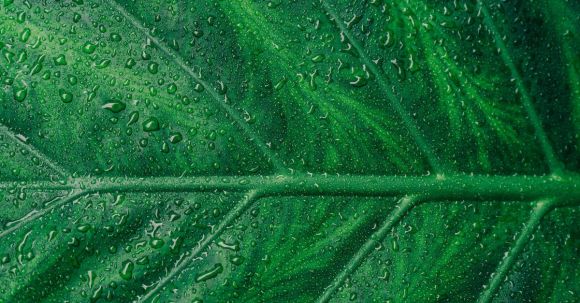Plants are not only beautiful to look at, but they also play a crucial role in our ecosystem by generating oxygen. Have you ever wondered how plants are able to produce this life-giving gas? In this article, we will explore the fascinating process through which plants generate oxygen and why it is so important for our planet’s survival.
Photosynthesis: The Key to Oxygen Production
At the heart of oxygen production in plants lies a process called photosynthesis. Photosynthesis is a complex biochemical reaction that occurs in the chloroplasts of plant cells. It involves the conversion of light energy from the sun into chemical energy, which is then used to produce glucose and oxygen.
Absorbing Sunlight: The Role of Chlorophyll
Chlorophyll, the pigment responsible for the green color of plants, plays a vital role in photosynthesis. It is found in the chloroplasts and is responsible for capturing sunlight. When sunlight strikes a plant’s leaves, chlorophyll molecules absorb the energy and use it to power the photosynthetic process.
Splitting Water: Releasing Oxygen Molecules
One of the first steps in photosynthesis is the splitting of water molecules. This process, known as photolysis, occurs in the thylakoid membranes of the chloroplasts. During photolysis, water molecules are broken down into oxygen, hydrogen ions, and electrons. The oxygen molecules are then released into the atmosphere as a byproduct of this reaction.
Building Glucose: The Importance of Carbon Dioxide
While oxygen is released during photosynthesis, plants also require carbon dioxide to produce glucose, a type of sugar that serves as their primary energy source. Carbon dioxide is absorbed from the atmosphere through tiny openings called stomata, which are found on the surface of leaves. Inside the chloroplasts, carbon dioxide molecules undergo a series of chemical reactions to form glucose.
Oxygen Production: A Vital Role in the Environment
The oxygen produced by plants through photosynthesis has far-reaching implications for life on Earth. It is estimated that plants are responsible for generating approximately 70% of the oxygen in our atmosphere. This oxygen is essential for the survival of all living organisms, including humans.
Oxygen for Human Respiration
Humans, as well as many other animals, rely on oxygen for respiration. During respiration, oxygen is taken in by our lungs and transported to our cells, where it is used to produce energy. The byproduct of respiration is carbon dioxide, which is then exhaled and absorbed by plants to continue the cycle of oxygen production.
Maintaining the Balance of Gases
Oxygen and carbon dioxide are part of a delicate balance in our atmosphere. While plants produce oxygen, they also consume carbon dioxide, helping to regulate its levels in the atmosphere. This balance is essential for maintaining the health of our planet and mitigating the effects of climate change.
Preserving Plant Life: A Call to Action
Given the critical role that plants play in oxygen production, it is crucial that we take steps to preserve and protect plant life. Deforestation, pollution, and climate change pose significant threats to the health of our ecosystems and the balance of gases in our atmosphere. By supporting conservation efforts and adopting sustainable practices, we can ensure a healthier future for both plants and humans alike.
In conclusion, plants generate oxygen through the process of photosynthesis. By absorbing sunlight, splitting water molecules, and utilizing carbon dioxide, plants are able to produce oxygen as a byproduct. This oxygen is essential for the survival of all living organisms and helps maintain the delicate balance of gases in our atmosphere. It is our responsibility to protect and preserve plant life to ensure a sustainable future for our planet.
